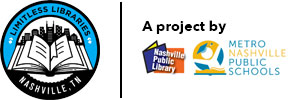Every bone tells a story : hominin discoveries, deductions, and debates
(Book)
Author
Contributors
Published
Watertown, MA : Charlesbridge, c2010.
Status
Dupont Hadley Middle - Teen Non-Fiction
930.1 RUB
1 available
930.1 RUB
1 available
Description
Loading Description...
Also in this Series
Checking series information...
Copies
| Location | Call Number | Status |
|---|---|---|
| Dupont Hadley Middle - Teen Non-Fiction | 930.1 RUB | On Shelf |
More Details
Published
Watertown, MA : Charlesbridge, c2010.
Format
Book
Physical Desc
185 pages : col. ill., col. maps ; 24 cm.
Language
English
Reading Level
MG+
Level 7.6, 6 Points
Level 7.6, 6 Points
Lexile measure
1010
Notes
Bibliography
Includes bibliographical references (p. 178-181) and index.
Description
When did language begin? How did early humans populate the globe? By looking closely at four of the most significant hominins ever discovered, the authors explain how Turkana Boy, Lapedo Child, Kennewick Man, and Iceman have influenced debates about the nature of the earliest members of the family Hominidae.
Awards
YALSA Award for Excellence in Nonfiction for Young Adults Finalist, 2011
Awards
A Junior Library Guild selection.
Reviews from GoodReads
Loading GoodReads Reviews.
Citations
APA Citation, 7th Edition (style guide)
Rubalcaba, J., & Robertshaw, P. (2010). Every bone tells a story: hominin discoveries, deductions, and debates . Charlesbridge.
Chicago / Turabian - Author Date Citation, 17th Edition (style guide)Rubalcaba, Jill and Peter. Robertshaw. 2010. Every Bone Tells a Story: Hominin Discoveries, Deductions, and Debates. Charlesbridge.
Chicago / Turabian - Humanities (Notes and Bibliography) Citation, 17th Edition (style guide)Rubalcaba, Jill and Peter. Robertshaw. Every Bone Tells a Story: Hominin Discoveries, Deductions, and Debates Charlesbridge, 2010.
MLA Citation, 9th Edition (style guide)Rubalcaba, Jill., and Peter Robertshaw. Every Bone Tells a Story: Hominin Discoveries, Deductions, and Debates Charlesbridge, 2010.
Note! Citations contain only title, author, edition, publisher, and year published. Citations should be used as a guideline and should be double checked for accuracy. Citation formats are based on standards as of August 2021.
Staff View
Loading Staff View.
